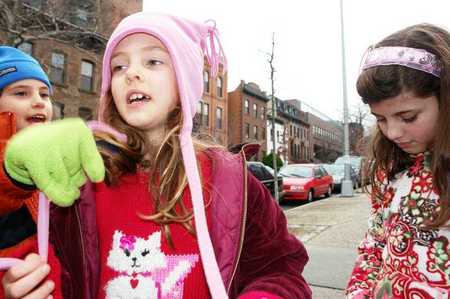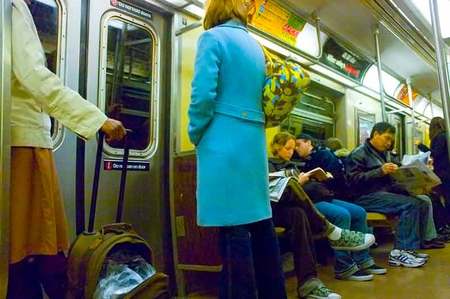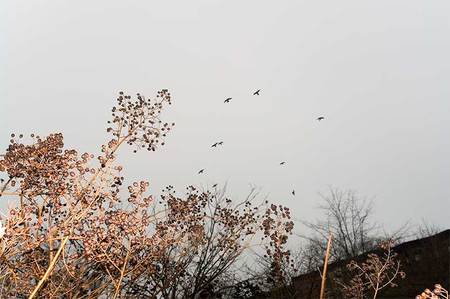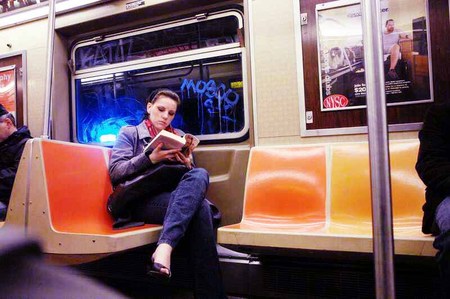My friend sent me this story about Park Slope that appeared in the New York Times back in 1992.
By BRET SENFT
Published: November 1, 1992
PARK SLOPE is families everywhere and brownstones, street after street of them. Far enough from Manhattan for a neighborhood feel, it maintains, in its multiracial population and cultural institutions, what many residents call an urban sophistication.
“A very small-town community with a cosmopolitan attitude,” said George Etchison, a 20-year resident and owner of the Brownstone Gallery on Seventh Avenue, the Slope’s main street. The gallery’s current exhibition, “Made in Brooklyn,” features local artists and memorabilia from the borough’s heyday.
The “small town” was still a sparsely populated rural area in 1857, when the railroad financier Edwin C. Litchfield built an Italianate villa overlooking his vast property sloping down to the Gowanus Canal.
By 1874, the 526-acre Prospect Park was completed, designed by Frederick Law Olmsted and Calvert Vaux to encompass the villa, which now houses park offices. The designers, regretting the traverses of Central Park, their earlier commission, created a separate entity, Institute Park, for the main branch of the Brooklyn Public Library, the Brooklyn Museum and a 50-acre Botanic Garden, north of Flatbush Avenue.
Grand Army Plaza, the main entrance to the park, was patterned after the traffic circle around Paris’s Arc de Triomphe; Victory in her chariot pulled by four horses rides atop the massive Soldiers’ and Sailors’ Memorial arch.
In the 1880’s, mansions and brownstones for the English and German upper class, with stained-glass windows, carved oak paneling and high-relief plasterwork, were built along the park and adjacent blocks. Along Eighth Avenue off the Plaza are Romanesque Revival mansions built in 1888 by Thomas Adams Jr., creator of Chiclets chewing gum, and in 1891 by George P. Tangeman, the baking powder magnate. The Venetian Gothic palazzo built in 1891 for the private Montauk Club has a terra-cotta exterior and friezes depicting its eponymous tribe. The Park Slope Civic Council holds an annual neighborhood house tour in May.
As the area developed, distance from the park was measured economically, with more modest brownstones built in the central and south Slope for Irish and Italian immigrants working as servants for the gentry, on the waterfront or in factories.
In the 1950’s, with middle-class flight to the suburbs and social deterioration, one-family brownstones were converted to rooming houses. In the 60’s, so-called Brownstone Pioneers — young professionals, along with artists and teachers — reclaimed the rowhouses, buying cheap and embarking on long-term renovations.
“We called it ‘the schoolteacher’s coup’ — buying an Upper East Side-quality brownstone on schoolteachers’ pay,” said Everett H. Ortner, writer, historian and co-founder in 1968 of the Brownstone Revival Committee. (His wife, Evelyn, a longtime community activist, led the seven-year effort that culminated in 1973 in the designation of a historic district bordering the park and Plaza.)
In those “coup” days, a brownstone cost less than $25,000. Today, they cost $360,000 to $500,000, says Roberta L. Faulstick of William B. May Company, although “many handyman specials in the South Slope” average $250,000.
Most prevalent, however, is “the resegmentation of the housing stock into luxury co-ops,” said Clem Labine, a 25-year resident and publisher of Traditional Building, a magazine for professional restorers. Two-bedroom co-ops in brownstones run $125,000 to $250,000, said Ms. Faulstick.
Rentals range from $700 for a studio to $1,600 for a three-bedroom duplex, higher if there is a garden, terrace or roof deck.
ON a recent Sunday at the park boathouse, David Kaplan and his family enjoyed the Touch of Autumn fair organized by park rangers. Mr. Kaplan, a vice-president with Citibank, held his son Isaac, 2 years old, while Bonnie Quint Kaplan and their daughter Nadine, 5, toured the nature exhibits that were in the boathouse that weekend.
“This is a very relaxed place to live compared to Manhattan,” said Ms. Kaplan, unwrapping a sandwich for Nadine. The family lives in a seven-room co-op in a tall luxury building at 35 Prospect Park West, offering, Ms. Kaplan said, “a Fifth Avenue feeling, since we’re right across from the park, in a building we couldn’t possibly afford if it were in Manhattan.”
Among the amenities are the park, with its carrousel, which was renovated by the Prospect Park Alliance, and the zoo, which is to reopen next year after a $36 million renovation; a half-dozen day-care centers; the Pinch Sitters Agency, for last-minute babysitters; a farmers’ market in Grand Army Plaza each Saturday; the 3,850-member Park Slope Food Co-op in two converted carriage houses on Union Street; the Brooklyn Conservatory of Music, offering concerts and recitals, and, in warm weather, frequent brownstone stoop sales, the counterpart to suburban garage sales.
Inside the park bordering the neighborhood is the 11th Street playground, the nearby Bandshell and, across West Drive, seven ball fields for a thriving Little League population.
For the hungry, there’s a wide choice on Seventh Avenue, including New Prospect at Home (at St. John’s Place; take-out entrees, salads and pastries), the New Purity Restaurant (Union Street; since 1929); Inaka Sushi House (at Fourth Street) and the kid-friendly Two Boots Pizza (off Seventh at Second Street).
At Seventh Street, John J. Cortese runs the grocery his grandfather founded 77 years ago. His stock-in-trade, besides dry goods, fruits and vegetables, is children. As commissioner of the Park Slope Baseball League, he oversees 34 sandlot teams and coordinates umpires for 140 Little League teams in the spring.
“On Saturdays and Sundays, it’s a beautiful thing to see: wall-to-wall kids in Prospect Park,” he said.
A downside is the progressive neighborhood’s inability to reach consensus on social problems. Illegal street vendors clog the Seventh Avenue sidewalks on weekends and the homeless beg for change at several automatic teller machines. Does this bespeak urban blight or personal initiative? Neighborhood reaction is split 50-50, according to Craig R. Hammerman, assistant district manager for Community Board 6.
“THIS is a place where a marketplace of ideas are freely bantered about,” he said. “Thus, not merely the debate but the appearance of inaction can be frustrating.”
There are six elementary schools, with P.S. 321 on Seventh Avenue getting high marks for its heavy parental involvement. The Brooklyn New School, an alternative created by the district in 1987, with emphasis on individual hands-on learning, adjoins I.S. 88 (one of two junior high schools).
The once-troubled John Jay High School, with 4,000 students, got a $3 million Federal grant in 1989 to upgrade and introduce new curriculum, such as the law and justice program, with its model courtroom and forensic laboratory and a computerized library research system. The school has been divided into Houses (such as Law and Justice, Humanities and Computer), with corporate partnerships with I.B.M., which provided networked computer labs throughout the school, and Chemical Bank, which provided funds for special projects.
As for private schools, the Woodward Park School, created in 1978 in a merger with the Brooklyn Ethical Culture School, uses progressive Bank Street methods of experiential learning for its 160 students from nursery to grade 8. Tuition is $7,000 to $9,000 a year.
Founded in 1886, the Berkeley Carroll School, with 640 pre-k-12 students, emphasizes math, science and foreign language and has computer instruction starting in kindergarten. The Beyond Berkeley Carroll program has students volunteering in soup kitchens, geriatric centers and environmental projects throughout the neighborhood. Summer programs include a day camp, Young Scientists Institute and the well-known Creative Arts program. Tuition is $4,500 to $10,800 a year





